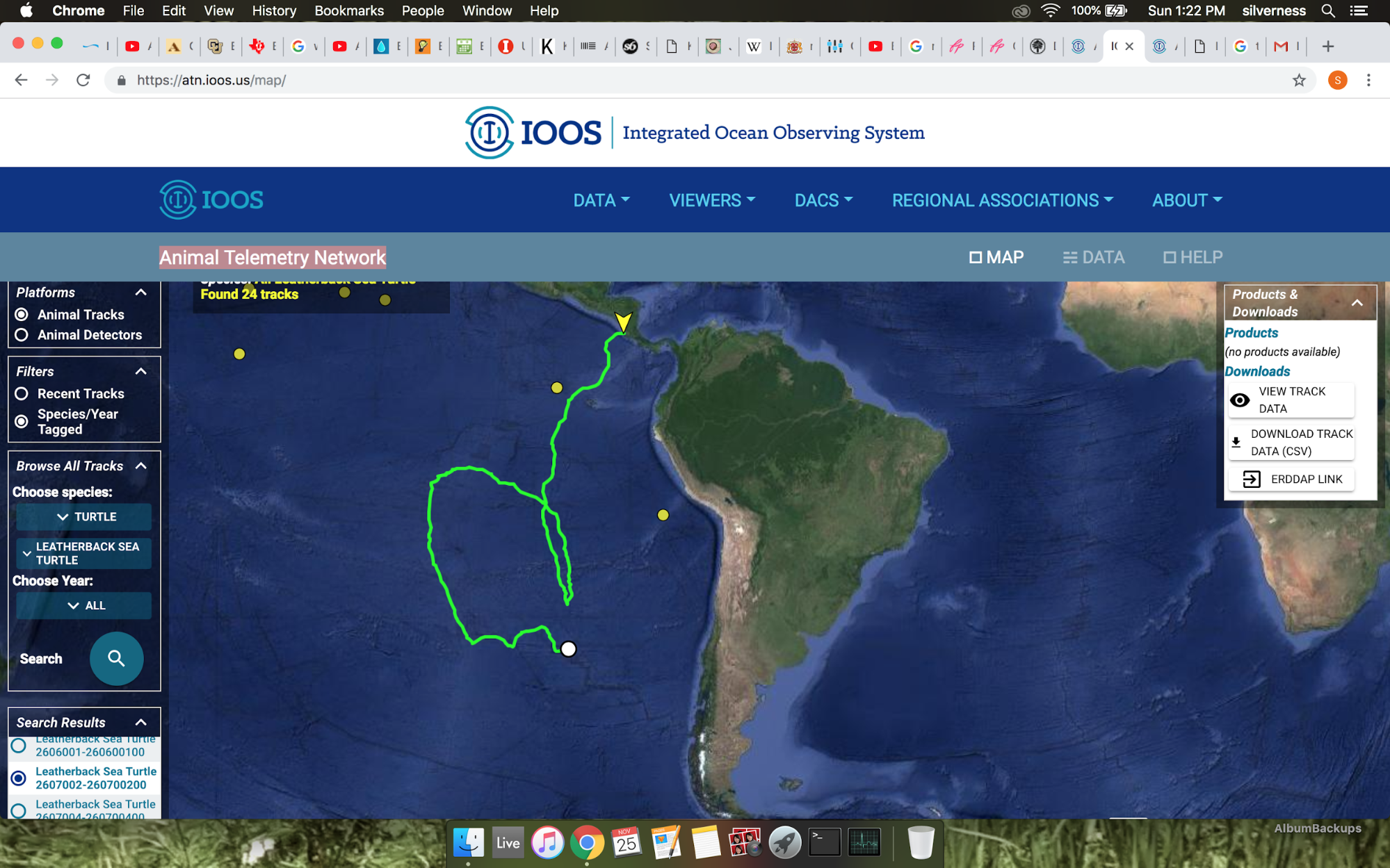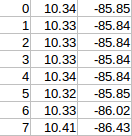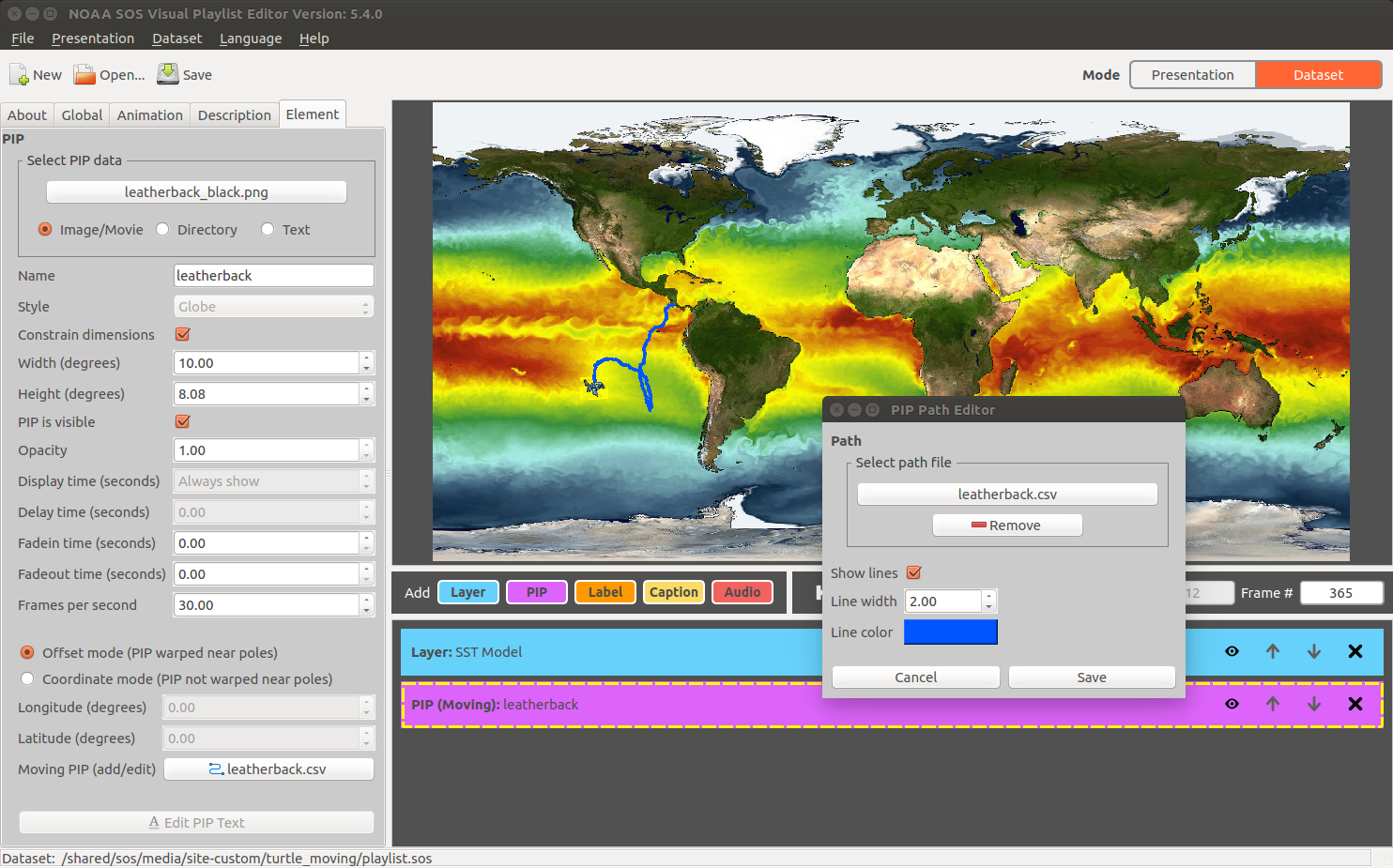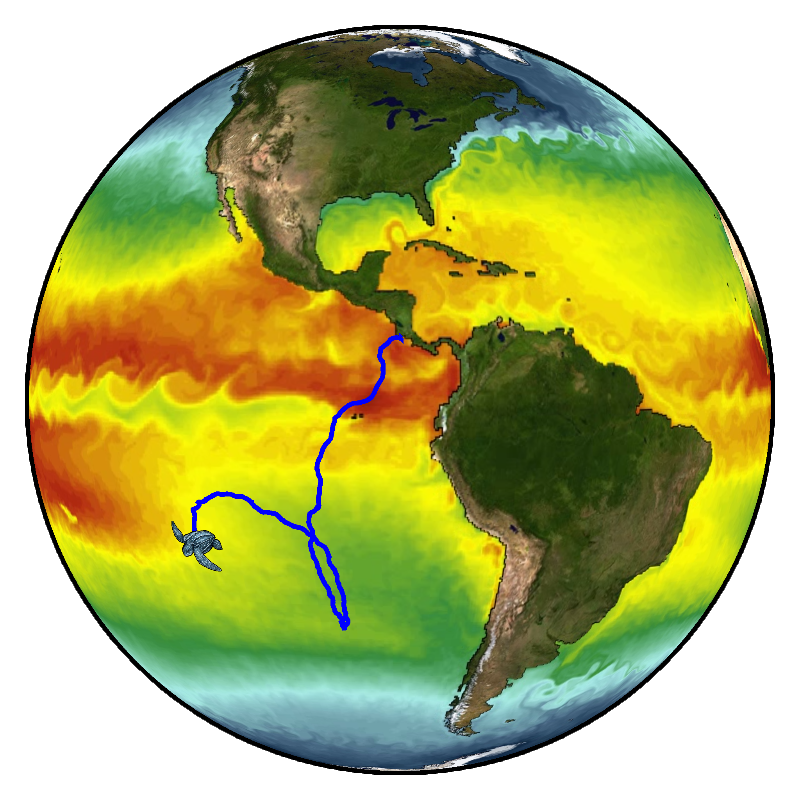Example: Leatherback Turtle Track
Creating a Moving PIP Path File
Permalink to Creating a Moving PIP Path FileI wanted to display the track of a leatherback turtle on SOS, so, I did a searched the web for animal migration data, which lead me to the Integrated Ocean Observing System website, which contains animal telemetry data. I selected a few options on the left-hand side toolbar, and was presented with a map of the turtle’s track.

The Integrated Ocean Observing System’s animal telemetry tool.
Then, from the right-hand side toolbar, I downloaded the following track file (which already happened to be in a csv file format).

stanford_import_ssm_public_6ff4_4d83_2b6c.csv (excerpt from beginning of file).
For convenience (and also so that I would have a copy of the original file in case I needed it for later or wanted to start over), I copied the file to a new file called leatherback.csv.
I then opened leatherback.csv in Excel (open it in csv mode) and edited the track data to be in the format that a moving pip requires — i.e. removed all column labels and removed all columns of data except for the latitude and longitude columns, and then added a new column of data (the first column) with sequential frame numbers in them.

An excerpt from the beginning of the modified leatherback.csv file as seen in Excel.
As a side note, because the file was opened and/or saved using the csv file format, when I view the file in a simple text editor like TextEdit or Gedit, the file should look like this excerpt (i.e. fields separated by commas):
0,10.34,-85.85
1,10.33,-85.84
2,10.33,-85.84
3,10.33,-85.84
4,10.34,-85.84
5,10.32,-85.85
6,10.33,-86.02
7,10.41,-86.43
A sample of leatherback.csv as seen in a text editor.
Given this path file, when the SOS dataset animation reaches frame number 6, the turtle PIP will be positioned at latitude 10.33 and longitude -86.02.
Adding a Moving PIP to an SOS Dataset
Permalink to Adding a Moving PIP to an SOS DatasetOnce my moving PIP path file was in its correct format, I was ready to create an SOS dataset. Using the SOS Visual Playlist Editor (VPLE), I created a site-custom dataset by adding a Layer of a sea surface temperature movie that I found in the SOS Data Catalog, and then I added a PIP image of a leatherback turtle that I found online.
To make my PIP move, I needed to link my csv path file to the PIP. So, in the Element tab for the turtle PIP, I clicked on the button next to the “Moving PIP (add/edit)” field to add the leatherback.csv file and to specify the line color and size of the line. If you don’t want a line, simply uncheck the line box. Click Save to save your changes. (See the Create Moving PIPs section in the VPLE manual for more information.)

Linking the path file to a PIP in the Visual Playlist Editor.
When I finished creating and saving my dataset in the VPLE, I loaded the dataset onto SOS and the turtle started to move as the dataset was animating.

The turtle PIP shown three-fourths of the way through its track in the finished dataset.
Many global datasets have timestamps, and many migration tracks also have timestamps. With a little more effort, you can find ways to match the data so that there is a clear and accurate tie-in between the global data and the track data.